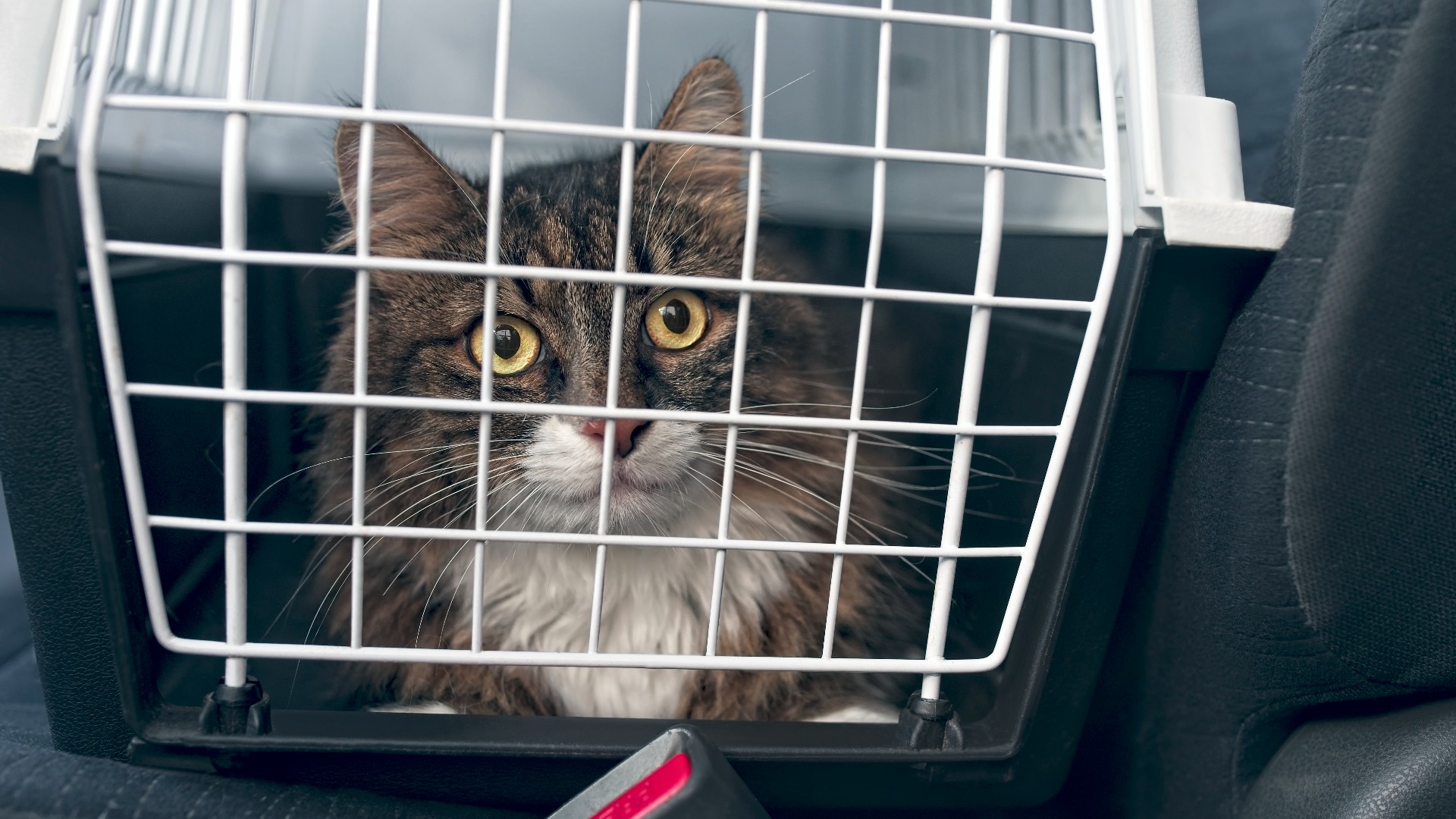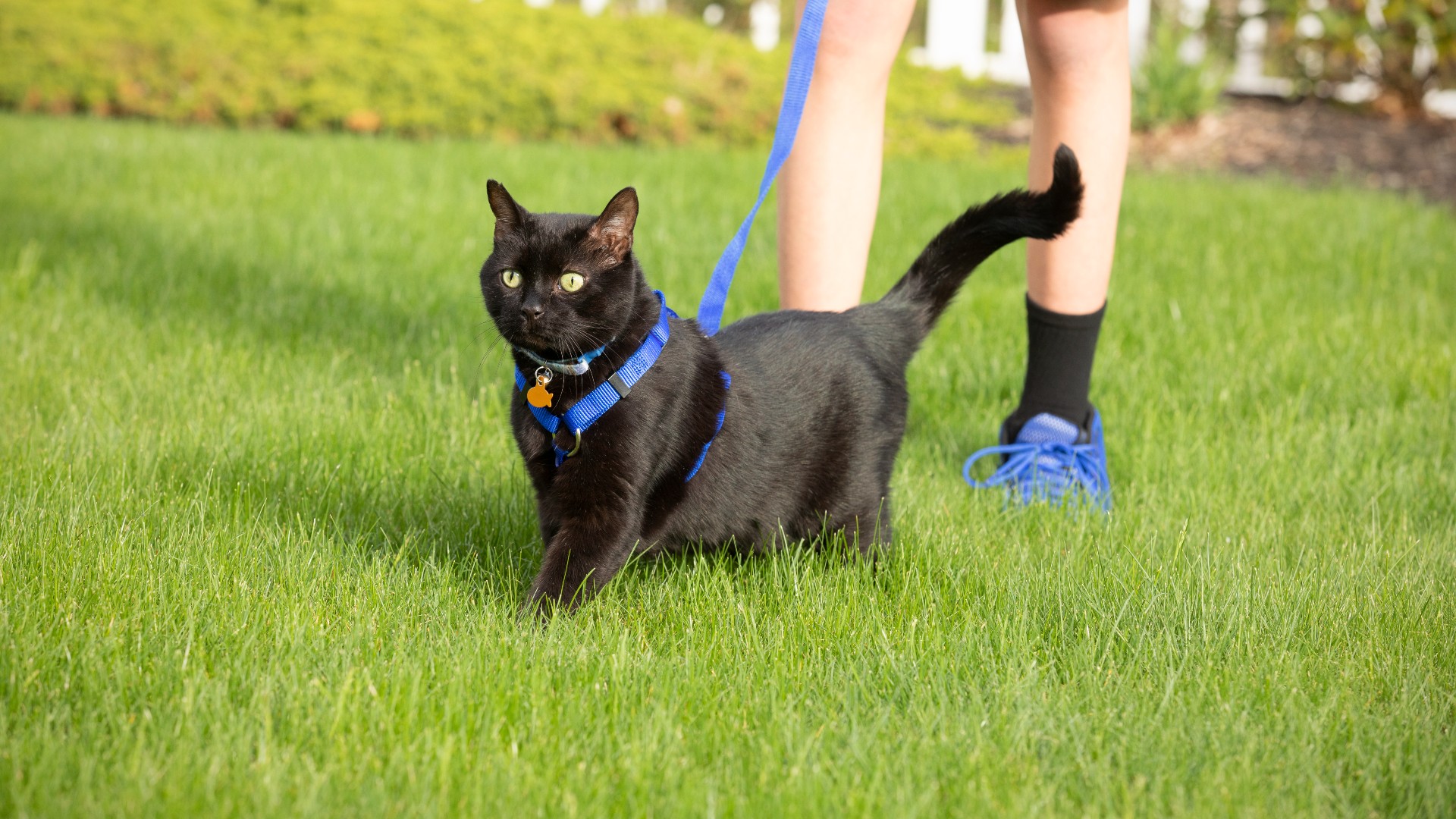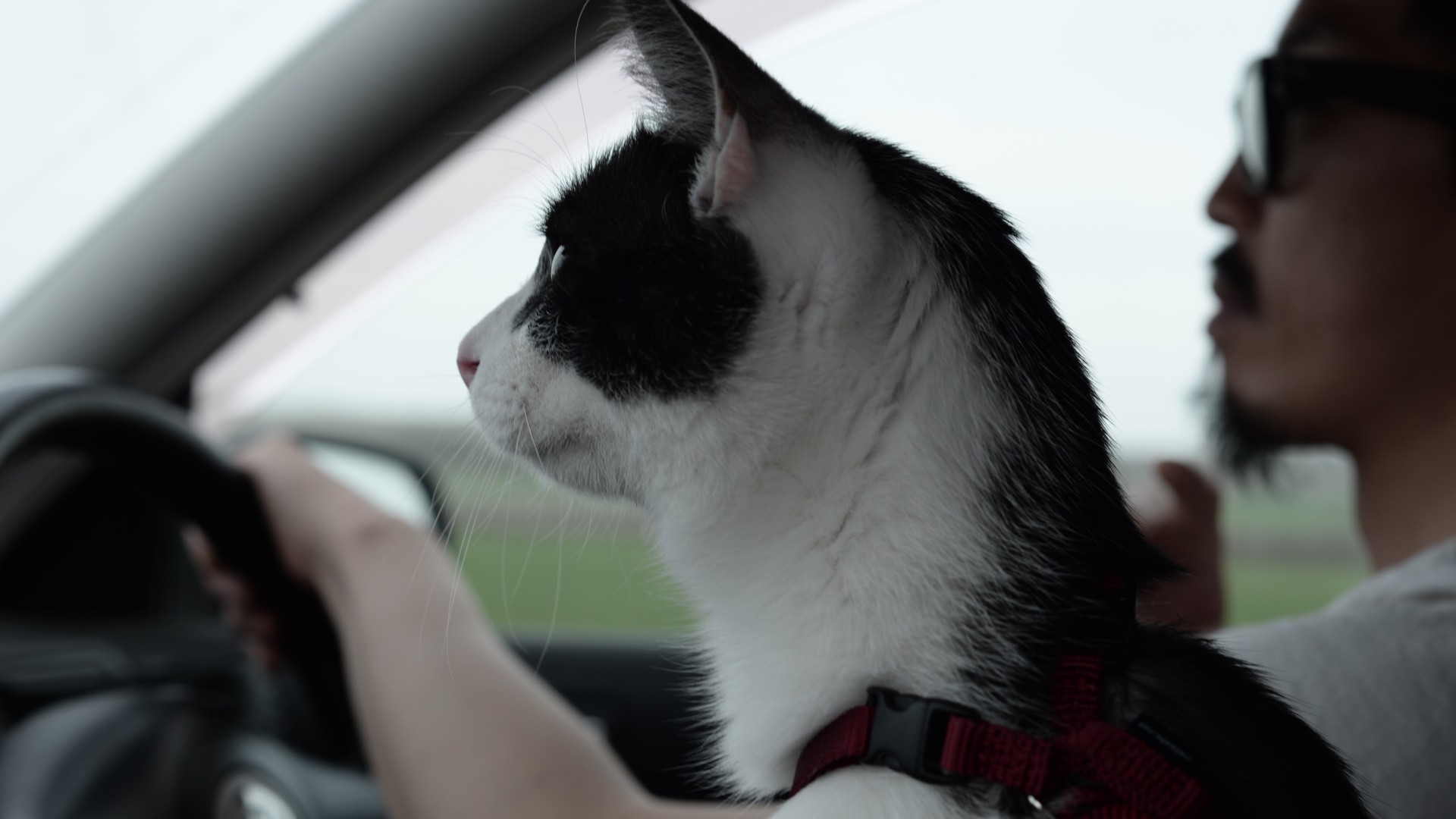Traveling with cats in the car
Make traveling with cats in the car much more smooth with our guide, whether you’re moving across the country or visiting the vet

Traveling with cats in the car may sound daunting, but it doesn’t have to be. Cats are generally not big fans of travel and would much rather stay curled up in the comfort of their own home. However, there is plenty you can do to make for a stress-free trip with your kitty from researching the best cat carriers to making the car a more comfortable environment. Whether you’re taking a short trip to the vet or cattery, going away on holiday or moving home, this guide will provide you with all the information you need for a safe and happy pet.
How long can a cat travel in a car?
There are no specific regulations for how long a cat can travel in a car. They are able to travel for extended periods of time as long as they are comfortable and their basic needs are met. Their carrier should be the right size, made of a sturdy material, well-ventilated and with a favorite blanket inside. Make sure they have enough water, food and a litterbox to do their business in. It is generally recommended that they do not travel for more than six hours and you shouldn’t keep your cat in a carrier overnight. If possible, take them out to let them stretch and go to the bathroom every two to three hours. How often they will need to stop will depend on the individual cat so it’s important to understand their needs and how often they will want to eat and relieve themselves.
How do you take a cat on a long car journey?
This is everything you need to know to travel with a cat in the car:
Start early
The younger you can get your cat used to traveling in a car the better. You want to get them used to it so it’s just as easy to take them to the vet as it is to move house with them.
Check their health
Make sure your cat is up to date with their health checks at the vet to avoid any problems when traveling. Start with shorter drives first, not only to acclimatize your cat, but to rule out any other issues such as motion sickness in case they need any medication.
Make sure they’re secure and comfortable
Be sure to research the right carrier for your cat. It should be the right size, sturdy and ventilated. Try a carrier where the top comes off to make it easier to get your cat into it. Make sure it is secure in one of the back seats using a seatbelt and that your cat is comfortable by putting their favorite blanket, toys and treats inside. You will also want to adjust the temperature of your car accordingly.
Pack extra bedding
Take extra bedding and paper towels in case there are any accidents.
Get the best advice, tips and top tech for your beloved Pets
Food and water
Your cat should have access to food and water while they travel, but you may not want to feed them in the hours before your journey in case it makes them ill.
Take breaks
Plan stops throughout a long journey so your cat can stretch and go to the toilet if they don’t have a travel litterbox. Pack a cat harness and leash for a safe way for them to get some exercise during their breaks.
Don’t leave them
Never leave your cat in the car as your vehicle can easily heat up and be unsafe for your cat. Instead make sure you pack food and take them with you when you stop for any reason.

How to keep a cat calm in the car
The best way to ensure your cat is safe and happy during your travels is to keep them calm. As well as thinking about their comfort, here are just some of the ways you can do this:
Get your cat used to their carrier by keeping it out in the house instead of stored away. Leave the door open and put their favorite blanket and treats inside. Once they are comfortable sitting in it, take them for a short trip around the block before going on a longer journey.
Play with your cat before you leave the house so they feel loved and safe with you.
Use pheromone spray or wipes on their blanket or carrier which will imitate familiar smells to make your cat feel more secure in an unfamiliar situation or environment.
As well as placing a blanket inside your cat’s carrier, you may want to think about covering the top of the box with a breathable blanket to give them privacy if they’re feeling vulnerable.
If they do not cope well with traveling, give them an oral sedative 1.5 -2 hours before you travel, but consult with your vet first about the best cat sedatives.
The car is a new environment for your cat so make sure it is as comfortable and as friendly as possible. Check the temperature, don’t play your music too loudly, speak to your cat in a soft, gentle voice while you travel and try to drive without braking too hard or taking sharp turns.
If you want to take breaks, research pet-friendly hotels ahead of time.
You may think of traveling with a friend who can keep your cat calm while you focus on driving.

Cats in cars: The law/Can you travel long distance without a carrier?
While traveling without a carrier is legal in the UK and in most US states as long as your cat is properly restrained, you could still get in trouble as there are laws against dangerous driving. Traveling without a cat carrier is not recommended as if they distract you this could pose a danger on the road and risk a fine, prosecution or an accident. Carriers are the best way to make sure your cat is safe; however if you don’t want to buy one, there are other options if you want to know how to transport a cat without a carrier such as a cardboard box or pet seat belt.
Cat car travel litter box vs cat carrier for the car
There are pros and cons for both a travel litter box and a carrier for the car. If you don’t want to stop as often when traveling with a cat, you’ll need a travel litterbox, but you may not like the idea of having your cat do their business in the car. There are lots of different types so make sure you do your research to ensure you buy the best carrier or best travel litterbox. Portable litterboxes are lightweight so easy and convenient to carry. Disposable litterboxes are smaller and cheaper, but may work better for shorter trips as they may leak on longer trips. The benefit of a self-cleaning travel litterbox is that they don’t need cleaning every time your pet relieves themselves; however they take up more space in the car and they can be expensive. A cat carrier with a litterbox built into it offers two in one but again these can be costly.
Cats may not need to relieve themselves for up to eight hours, but do you want to risk it? If you don’t want a litterbox in the car, make sure you know how often your cat is likely to need to do their business and make frequent stops. You can also place pee pads in their carrier in case of any accidents, but ideally choose one of the options above.

